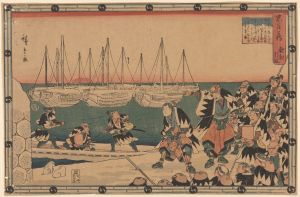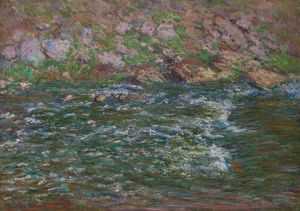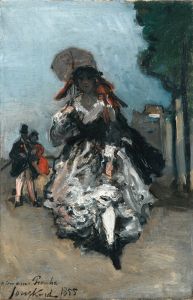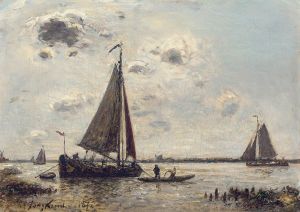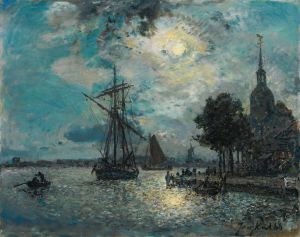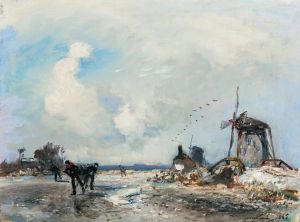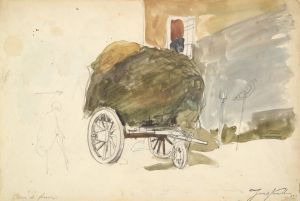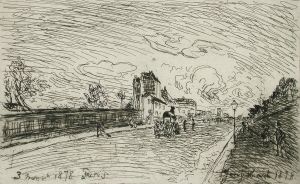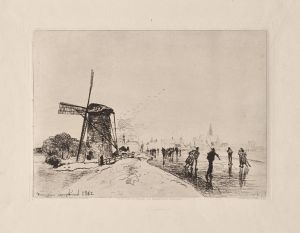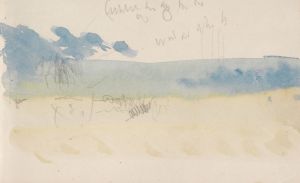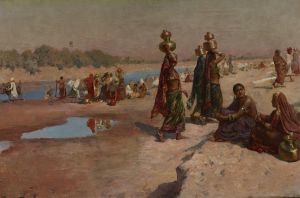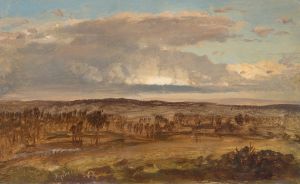
Environs de Grenoble
A hand-painted replica of Johan Barthold Jongkind’s masterpiece Environs de Grenoble, meticulously crafted by professional artists to capture the true essence of the original. Each piece is created with museum-quality canvas and rare mineral pigments, carefully painted by experienced artists with delicate brushstrokes and rich, layered colors to perfectly recreate the texture of the original artwork. Unlike machine-printed reproductions, this hand-painted version brings the painting to life, infused with the artist’s emotions and skill in every stroke. Whether for personal collection or home decoration, it instantly elevates the artistic atmosphere of any space.
Johan Barthold Jongkind was a Dutch painter known for his significant contributions to the development of Impressionism. Born on June 3, 1819, in the Netherlands, Jongkind spent much of his career in France, where he became associated with the Barbizon School and later influenced the Impressionist movement. His works are celebrated for their innovative use of light and color, capturing the essence of landscapes and cityscapes with a fresh, atmospheric quality.
"Environs de Grenoble" is one of Jongkind's notable works, reflecting his keen interest in the French landscape. Painted in 1873, this artwork exemplifies Jongkind's ability to convey the natural beauty and serene atmosphere of the countryside surrounding Grenoble, a city located at the foot of the French Alps. The painting showcases Jongkind's characteristic style, which blends elements of realism with a more impressionistic approach to light and color.
In "Environs de Grenoble," Jongkind employs a delicate palette to depict the tranquil landscape. The composition is marked by a harmonious balance between the sky, mountains, and the lush greenery of the fields. Jongkind's brushwork is both precise and fluid, capturing the transient effects of light on the landscape. The painting reflects his fascination with the interplay of light and shadow, a technique that would later become a hallmark of Impressionist art.
Jongkind's influence on Impressionism is well-documented, with artists such as Claude Monet acknowledging his impact on their work. Monet, in particular, admired Jongkind's ability to capture the fleeting effects of light and atmosphere, which became central themes in Impressionist painting. Jongkind's plein air approach, painting outdoors to directly observe and capture the natural environment, was a practice that many Impressionists adopted.
"Environs de Grenoble" is a testament to Jongkind's mastery of landscape painting and his role as a precursor to Impressionism. The painting not only highlights his technical skill but also his ability to evoke a sense of place and mood. Jongkind's work often focused on the beauty of everyday scenes, and this painting is no exception, offering viewers a glimpse into the serene and picturesque surroundings of Grenoble.
Throughout his career, Jongkind remained dedicated to exploring the nuances of light and atmosphere in his work. His paintings are characterized by a sense of immediacy and spontaneity, qualities that would later define the Impressionist movement. Despite facing financial difficulties and personal challenges, Jongkind continued to paint prolifically, leaving behind a legacy that would inspire future generations of artists.
Today, "Environs de Grenoble" is appreciated not only for its aesthetic qualities but also for its historical significance in the context of art history. Jongkind's work serves as a bridge between the realism of the Barbizon School and the innovative techniques of the Impressionists, marking an important transition in the evolution of modern art. His contributions continue to be celebrated in museums and collections worldwide, where his paintings are admired for their beauty and their influence on the trajectory of Western art.





